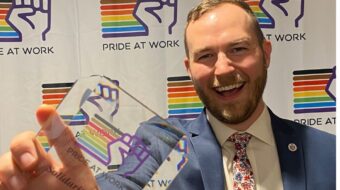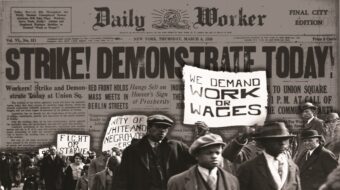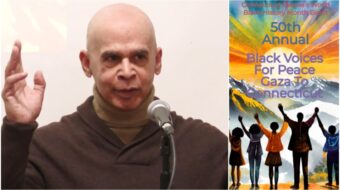
WASHINGTON (PAI) – Depending on which path the economy takes – the high growth of the mid-1990s, moderate growth or little growth – joblessness could stay high for up to 11 years, a new study for the Center for Economic Policy and Research says.
The study’s results prompted Sen. Al Franken and Rep. Keith Ellison, both D-Minn., to demand again that Congress pass legislation to retain up to 900,000 state and local government jobs – saying those services may be needed more than ever due to the continued high joblessness.
But prospects for that measure are questionable. Even Franken, in a July 20 telephone press conference, said, “I’m not sure we’ll get to this” legislation before Congress goes on its August break. The schedule is jammed after that.
And Ellison said the prospects of continued long-term high joblessness re-emphasize the case for permanent measures to create more jobs, including investment in infrastructure and creation of a “green energy” manufacturing economy.
The state-and-local-jobs bill is part of labor’s five-part package for revitalizing the economy and bringing it out of the Bush crash. The bill is a particular campaign cause of AFSCME, which points out – as did the lawmakers – that without it, teachers, firefighters, police and other vital services would have to be cut due to declining revenue.
“Public jobs are necessary because we’ve had cuts in public services. The results are more kids in the classroom and fewer cops on the beat,” Ellison said. “And public jobs create private jobs. If I’m a public worker, and I go to the grocery store and spend money, that money goes to the clerk’s paycheck on Friday.”
But passage of that state-and-local-jobs measure, and of another – also marooned on Capitol Hill – to provide $10 billion to retain 300,000 jobs in the nation’s schools, still would not attack the problem of high long-term unemployment. And CEPR’s study says that will remain, even in the most-optimistic scenario, until late 2012.
“Between December 2007 – the official first month of the recession – and December 2009, the economy lost more than 8 million jobs. Even if the economy creates jobs from now on at a pace equal to the fastest four years of the early 2000s expansion, we will not return to the December 2007 level of employment until March 2014,” CEPR said. “And by the time we return to the number of jobs we had” then, there will be 6.5 million more people in the workforce.
“If job growth matched the fastest four years in the most recent economic expansion, the economy would not catch up to the expanded labor force until April 2021. Even if job creation rates were as high as the fastest four years of the 1990s recovery, we would not return to pre-recession employment levels until September 2012, and we would not cover the increase in the potential labor force until September 2014,” it added.
If you took the fastest two years of recent job growth – in the mid-1970s and early 1980s – the economy would create all the past lost jobs by November 2011, and would hit 5 percent joblessness a year after that, just before the next presidential election, said the study’s co-author, economist John Schmitt.
“Right now, we may be looking at a double-dip recession if we don’t continue to stimulate the economy,” Franken said. That’s what happened in the Great Depression, too, he noted: FDR ran huge deficits and put people to work in 1933-36 but then balanced the budget in 1937 and the nation plunged back into higher joblessness.
The prospect of continued high long-term joblessness produced differing solutions from the two lawmakers. Franken predicted “we’d have to continue taking these votes” to extend long-term federally paid unemployment benefits, just as Congress did from July 19-23. The measure passed and President Obama signed it.
Ellison turned to the longer-term measures to put people to work.
“We can pass other bills – a quality national infrastructure bank bill” to fund bonds for vital construction projects nationwide, “and we can reinvest in manufacturing,” he said. But the lawmaker also warned that improvement would not be quick.
“You don’t snap a finger and it comes. You have to talk about what government does right, how to create a high-wage economy, get workers more rights, Buy America, and making credit available to small business people” to create jobs, he said. “What I’m talking about is a strategy.”
Photo: Hundreds of job seekers gather at the Los Angeles Mission for the ninth annual Skid Row Career Fair last month. (AP/Adam Lau)

MOST POPULAR TODAY


Zionist organizations leading campaign to stop ceasefire resolutions in D.C. area

High Court essentially bans demonstrations, freedom of assembly in Deep South

Afghanistan’s socialist years: The promising future killed off by U.S. imperialism

Communist Karol Cariola elected president of Chile’s legislature






Comments